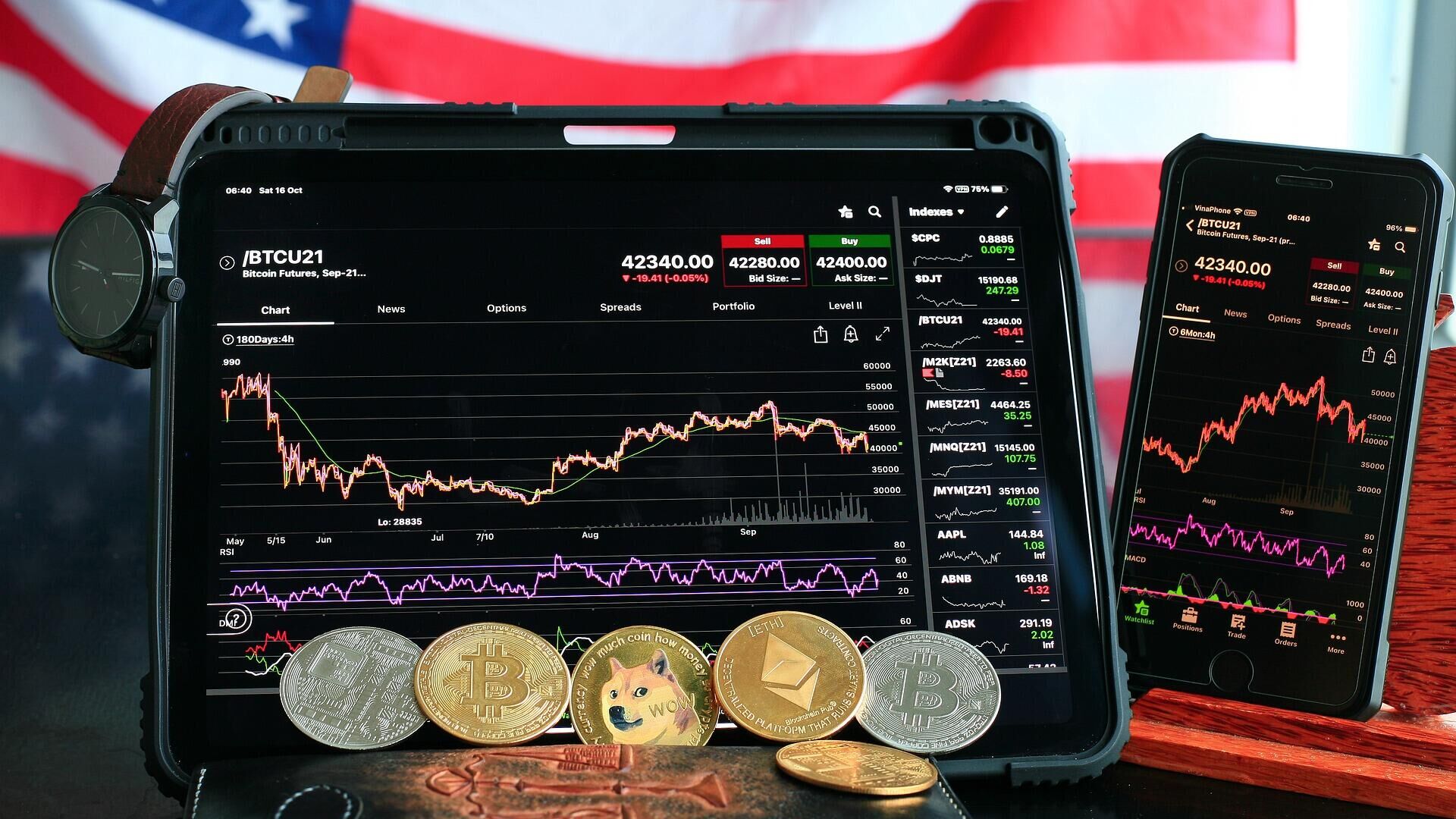What Stablecoin is And How it Functions
09:00 GMT 09.08.2023 (Updated: 10:28 GMT 30.01.2024)

© Photo : Pixabay
Subscribe
PayPal wants to streamline online transactions, and help people send money internationally more easily. This is a big step for the company, and their CEO Dan Schulman is really focused on creating a stablecoin it deems reliable and can retain its value.
One of the biggest American payment companies introduced its first-ever stablecoin called PayPal USD (PYUSD). The company is set to tap into the burgeoning prospect of USD-backed digital currencies for consumer transactions. This electronic currency is pegged to the US dollar. It is crafted to enhance the ease of financial exchanges within virtual environments and enable quicker and more economical country-to-country money transfers, though confined to crypto-associated and additional "web3" undertakings.
Following PayPal's announcement on August 7, 2023, regarding its intention to introduce an electronic coin, there has been considerable confusion about the characteristics and operational workings of this cryptocurrency. Sputnik aims to provide clarification on the concept of stablecoins, their function, and other pertinent and enlightening matters.
What is a Stablecoin?
A stablecoin refers to a type of cryptocurrency that maintains a fixed value linked to that of another currency (i.e., the USD), commodity (i.e., gold), or a financial instrument. Stablecoins are designed to present a choice in response to the extreme price instability observed in many well-known cryptos, such as Bitcoin (BTC) - which experiences notable fluctuations in its valuation. This instability has diminished the usefulness of cryptocurrencies for regular payments.
“The shift toward digital currencies requires a stable instrument that is both digitally native and easily connected to fiat currency like the US dollar,” said PayPal CEO Dan Schulman.
Stablecoins emerged as a strategic response to the inherent volatility that plagues traditional cryptocurrencies like Bitcoin and Ethereum. While these pioneering digital assets captured global attention for their potential to reshape financial systems, their wild price fluctuations made them less viable as everyday mediums of exchange and stores of value.
These stablecoins were designed to maintain a steady value by pegging themselves to tangible assets, such as national currencies like the US dollar or the euro, or even commodities. This approach provided users with a sense of stability and predictability that was lacking in the world of pure cryptocurrencies. Businesses and individuals seeking to harness the benefits of blockchain technology while avoiding the turbulence associated with price swings found stablecoins to be an attractive alternative.
Types of Stablecoins and How They Work
Stablecoins are typically generated as tokens on a blockchain platform and find their place in trading on decentralized exchanges (DEXs) or serving purposes within decentralized applications (dApps). A stablecoin exists in multiple forms, each operating a distinct mechanism to preserve its value.
The different stablecoin types include
Fiat-collateralized stablecoins are supported by a fiat currency - a type of currency that has value because a government declares it to be legal tender - reserve and sustain their value by enabling redemption at a constant exchange rate (usually 1:1). Fiat stablecoins are created by backing a fixed number of coins with a reserve of fiat currency held by the issuer or a trusted custodian (bank or any financial institution), and these coins are then pushed into circulation via direct dApps, exchanges, and purchases. Examples include Tether (USDT), USD Coin (USDC), and TrueUSD (TUSD).
Crypto-backed stablecoins are connected to crypto assets like Bitcoin or Ether. Given the inherent volatility of these reserve cryptographic tokens, the reserves must exceed their market cap. To create a $1 million stablecoin, you should keep $2 million worth of cryptocurrency as a backup. For instance, DAI (a cryptocurrency on the Ethereum blockchain designed to maintain a value that closely mirrors the US dollar) linked to the greenback, but it's secured by Ethereum and other cryptos valued at 150 percent of the DAI in circulation.
Commodity-backed stablecoins are connected to a tangible asset, like gold, silver, or crude oil, or a financial representation of that asset, like gold-backed Exchange Traded Funds (ETFs). Instances include Tether Gold (XAUT) and Pax Gold (PAXG).
Algorithmic stablecoins use algorithms and smart contracts to modify the coin's supply based on changes in market demand. A reserve of a different cryptocurrency usually backs this kind of virtual coin, and it will automatically create or eliminate coins to maintain a stable value. TerraUSD's value of $1 was achieved by utilizing the creation (minting) and removal (burning) of a counterpart coin, Luna. Well-known algorithmic stablecoins are TerraUSD (UST), Magic Internet Money (MIM), and Frax (FRAX).
What are the Most Popular Stablecoins?
Tether (USDT) are digital tokens pegged 1-to-1 with the American dollar and established on several blockchains. They are widely-used stablecoins across main OTC desks, wallets, and exchanges.
USDC is a stablecoin representing a digital dollar, serving continually online across developed blockchains, streamlining billions in day-to-day dealings, and retaining a 1-to-1 exchange guarantee with physical cash.
BUSD is a New York State Department of Financial Services (NYDFS)-approved stablecoin, backed 1-to-1 by the USD and issued in partnership with Paxos, ensuring all reserves are entirely in fiat currency and equivalents for guaranteed 1-to-1 redemption access to customer funds.
How to Buy and Sell Stablecoins
Before purchasing a stablecoin, individuals should examine prevalent e-coins available to determine the ideal fit and acquire a digital wallet (an application that enables electronic commerce transactions among other options), if you do not have one, then identify a reliable crypto asset exchange.
To buy a stablecoin:
Place funds into the exchange account through various methods or deposit different cryptos based on the supported choices of the exchange.
Access the exchange's trading platform, and purchase the preferred stablecoins from the listed trading pairs.
Ensure safe storage within the exchange's wallet or by transferring to a personal hardware/software wallet for security.
To sell a stablecoin:
Transfer stablecoins into the exchange account for trading or other purposes.
On the exchange's trading platform, assess trading pairs and choose between converting stablecoins to fiat or trading for other major cryptocurrencies.
Retrieve the profits and securely manage them in a bank account or e-wallet, following the exchange's offered alternatives.
Is Bitcoin a Stablecoin?
Bitcoin (BTC) stands apart from stablecoins due to its lack of stability in value. Stablecoins, in contrast, are designed to uphold a steady value by leveraging fiat currencies or assets like precious metals and other commodities.
Can Stablecoins Save the Greenback From De-dollarization?
Regulators express skepticism towards the term "stablecoin" due to its potential to mislead, preferring the label "so-called stablecoins" and emphasizing that their stability relies on vigorous support, governance, and enforceable adherence by issuers to uphold collateral, with inadequate collateralization posing noteworthy dangers to consumers and markets, according to Jennifer Lorentz, senior managing counsel, law, franchise and integrity.
The risk-riddled stablecoins have shown that it is far from offering succor to the rapidly diminishing dominance of the greenback, as evidence suggests. In May 2022, the collapse of the algorithmic stablecoin TerraUSD, caused by the failure of its backing crypto token Luna, led to an enormous market panic, resulting in a $40 billion loss in the crypto market, and the creator, Do Kwon, was subsequently charged by the SEC for deceptive claims about the coin's stability.
In another vein, smart-contract-based stablecoins like Platypus Finance's USP face regulatory oversight but can still harbor vulnerabilities, leading to potential value loss. An attacker exploited a contract flaw in the USP's system, withdrawing collateral while holding debt, draining pools, and causing de-pegging (the value of a stablecoin or currency deviates from its intended or pegged value), resulting in substantial losses for liquidity providers. USDT and USDC, too, have faced significant de-pegging episodes. A recent instance was with USDC, linked to the failure of Silicon Valley Bank, one of the financial institutions holding USDC reserves. Although USDC eventually returned to its USD peg, investors might have incurred losses due to panic-selling below the peg or from leveraged positions reliant on USDC collateral getting liquidated.
“We have a very active de-dollarization taking place. You’re having very significant reactions to the U.S. risks in the U.S. banking system, risks with the U.S. government itself, a geopolitical imposition on many parts of the world [and] the desire for alternative payment systems all around the world. This is happening and it’s accelerating,” noted the CEO of USD Coin stablecoin issuer Circle, Jeremy Allaire.
Some experts anticipate a decline in the dollar's global dominance due to the emergence of central bank digital currencies (CBDCs) like the digital ruble and e-Yuan. In a digital landscape featuring government-issued currencies, any digital representation of central bank money or an existing national currency will become convenient for cross-border payments, potentially minimizing transaction expenses without relying on the greenback or correspondent banks. This shift can contribute to reducing dependence on the dollar in international transactions in the wake of the "muscular use of sanctions" over the ongoing Ukrainian conflict.




